Getting down into the weeds....
HERBICIDE APPlICATION Report
June 26, 2024
Click to download report
Getting down into the weeds....
Hydro-raking of weeds commenced on Peters Pond on Monday, June 10th, in accordance with the Order of Conditions issued to PPGA by the Dracut Conservation Commission on 2/1/23. The work is being conducted by New England Lake & Grounds. The last time hydro-raking was conducted on Peters Pond was 2004.
Hydro-raking 2024
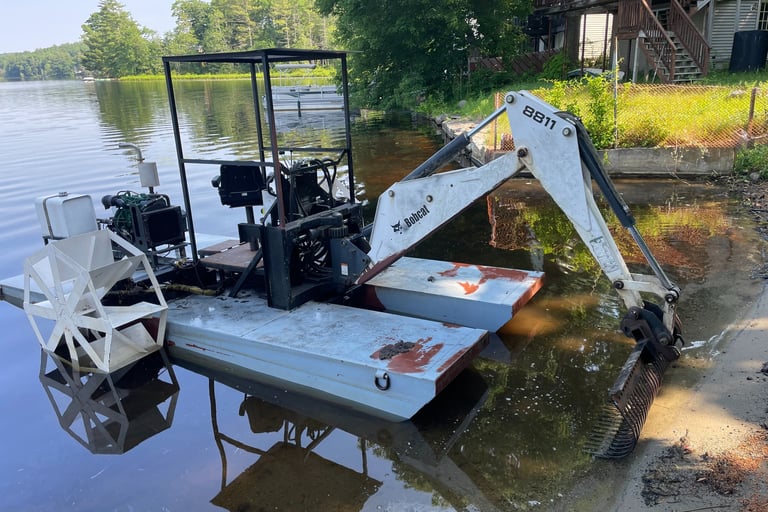

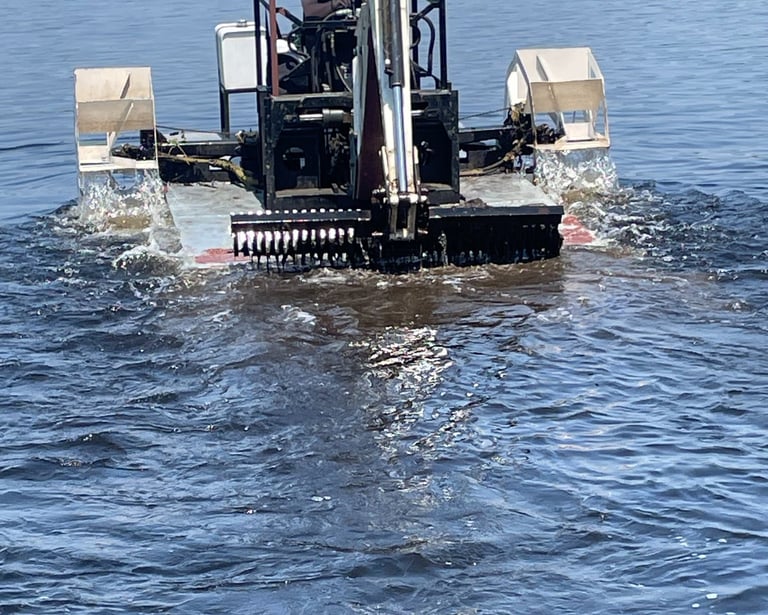

Follow-up to second Herbicide Application Completed on september 15, 2023, between 8:00 AM and 9:30 AM
Water & Wetlands LLC returned to Peters Pond on September 15th to conduct follow -up spraying of Imazamox to treat those remaining spots of waterlilies that were not killed during the initial spraying on August 23rd. This is a standard procedure to ensure effective treatment within designated areas.
The initial treatment was highly successful, and many members commented on the degree of die-off of the waterlilies. This second treatment should be "the icing on the cake". See the report prepared by Water and Wetlands on this second spraying below.
second Herbicide Application Completed on aUGUST 23, 2023, between 2:15 PM and 4:15 PM
As described in the Notice of Intent prepared by PPGA, and approved by the Dracut Conservation Commission , the second application of herbicides to Peters Pond in 2023 has been completed. In short, the herbicide imazamox (brand name Clearcast) was applied to 10-acres of the pond by Water and Wetland LLC. This application targeted the floating waterlilies and watershield. The cost for treating these 10-acres was $4,950.00. For our members and those providing donations to PPGA - thanks! - this is where the money goes.
Waterlilies are treated by "foliar" application of the herbicide; that is, the imazamox was sprayed directly on the floating plants. The chemical needs to seep into the leaves, and be translocated to buds and areas of growth, where it inhibits the synthesis of a specific protein (found only in plants), preventing the growth of new plant tissue, and causing the waterlilies to die.
August 23rd was the ideal day to conduct this spraying. It was a warm, sunny, dry day with little wind and calm waters - the perfect combination to maximize seepage of the herbicide into the waterlilies and thus maximize the destruction of this nuisance weed.
The treated waterlilies should die within 1 to 2 weeks, by turning yellow and then brown, and then sinking to the bottom of the lake. Most of these dead plants are not expected to grow back for at least a year or two.
Water and Wetland LLC will return to Peters Pond in 2 to 4 weeks to follow up and apply additional imazamox to areas within the 10-acre treatment zone where waterlilies are still present.
The low levels of imazamox dispersed into the pond will not harm fish or people. However, it can harm plants, so don't water your grass or garden with the pond water for 24 hours (i.e., until 4:15 PM on 8/24/23)
Finally, to be on the safe side, it is recommended that pets not be permitted to drink the water for a couple of days.
Click on the button below to view the report on the herbicide application by the licensed applicator.
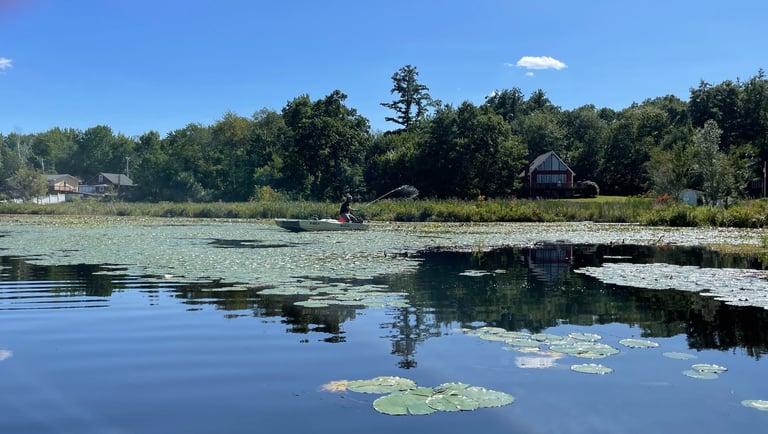

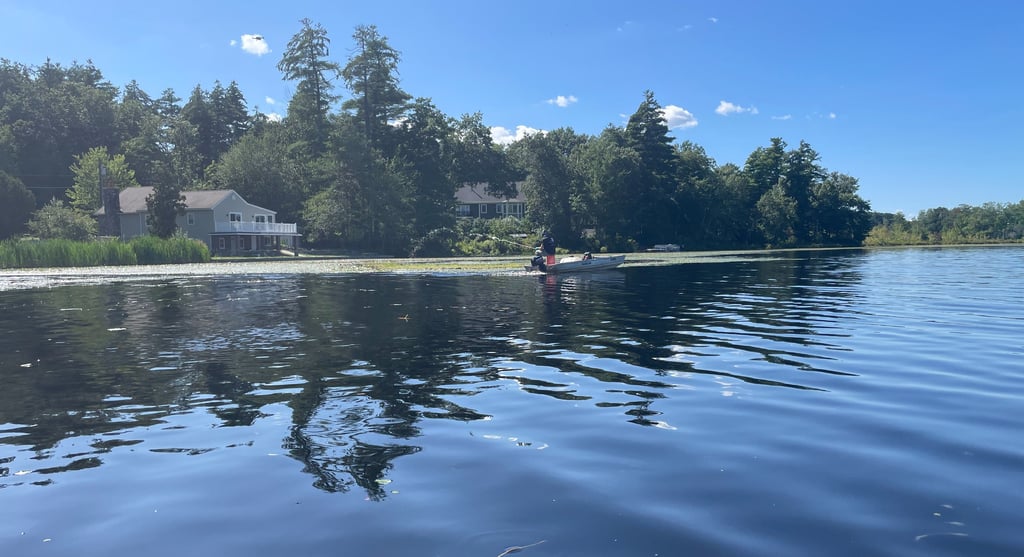

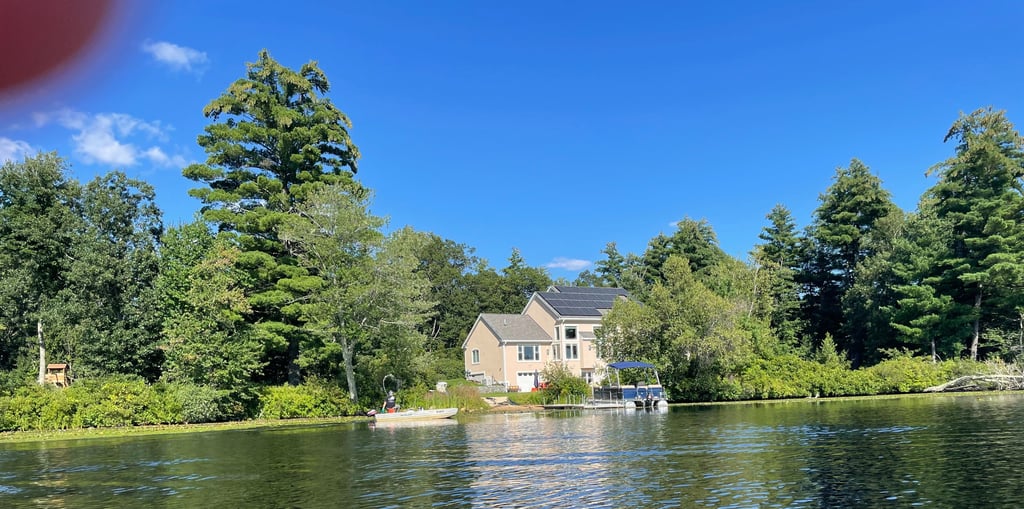

Herbicide Application Completed on June 6, 2023, between 1:30 PM and 3:00 PM
As described in the Notice of Intent prepared by PPGA, and approved by the Dracut Conservation Commission , the first application of herbicides to Peters Pond has been completed. In short, the herbicide diquat was applied to 10-acres of the pond by Water and Wetland LLC. This application targeted submerged weeds, most notably coontail, bladderwort, and the invasive species curly-leaf pondweed. A second application will occur at the end of the summer, to target the water lilies.
As can be seen in the photos below, the diquat was applied by discharging it through hoses that dragged along the bottom, in order to contact the submerged vegetation. This herbicide kills the submerged plants by interfering with the photosynthesis process.
The low levels of diquat dispersed into the pond will not harm fish or people. However, it can harm plants, so don't water your grass with the pond water until until 6/9/23, and don't water your garden with it until 6/11/23.
Finally, to be on the safe side, it is recommended that pets not be permitted to drink the water for a couple of days.
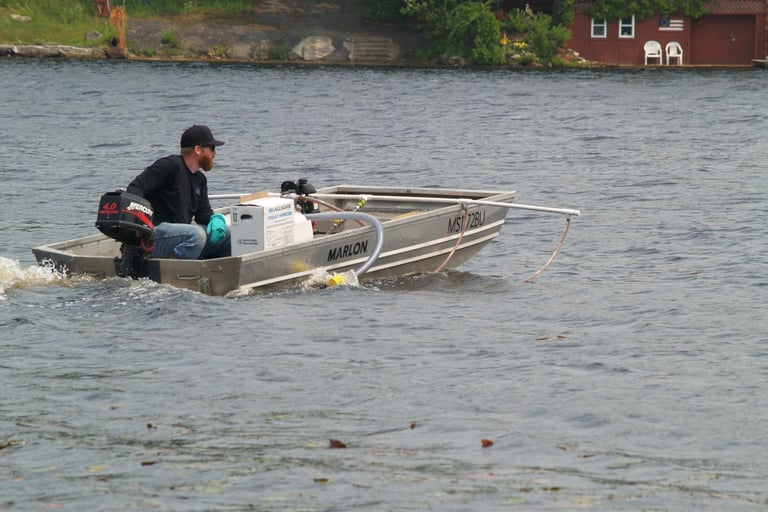

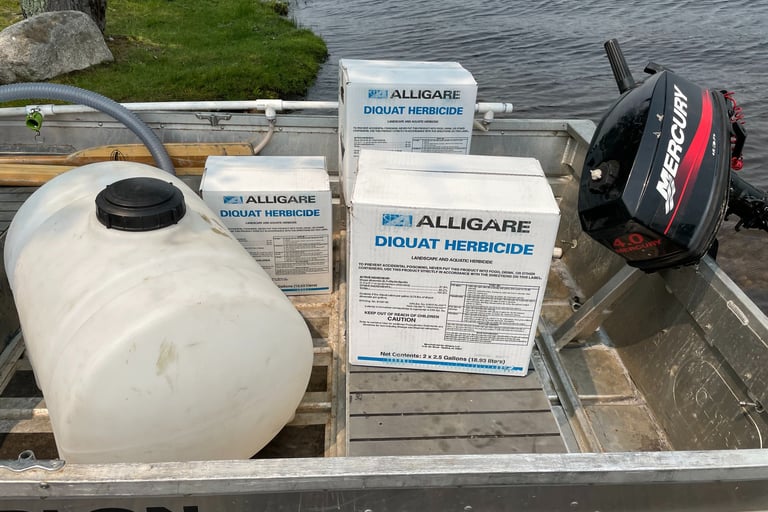


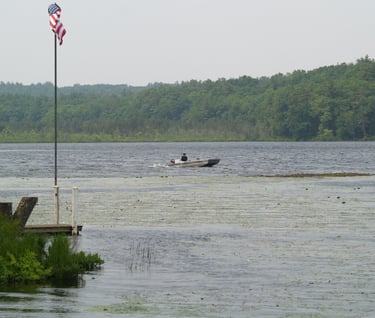
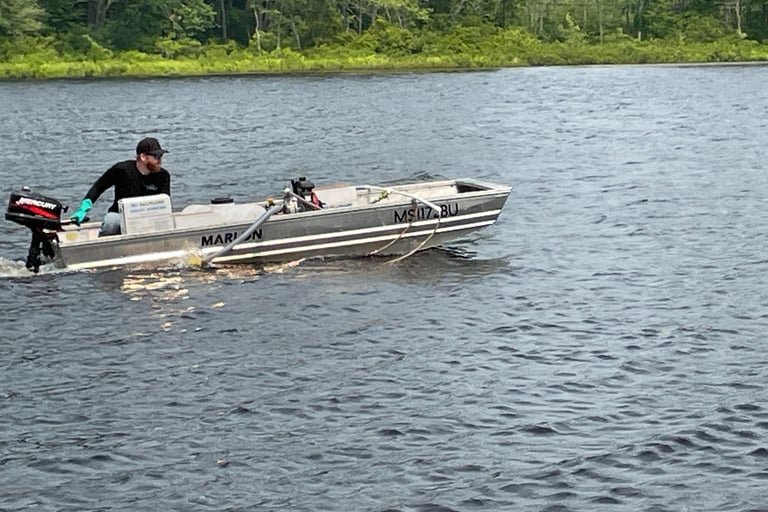

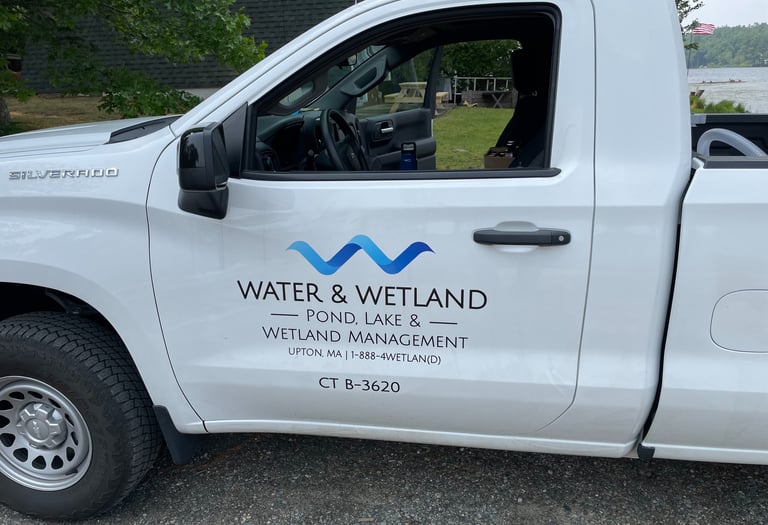

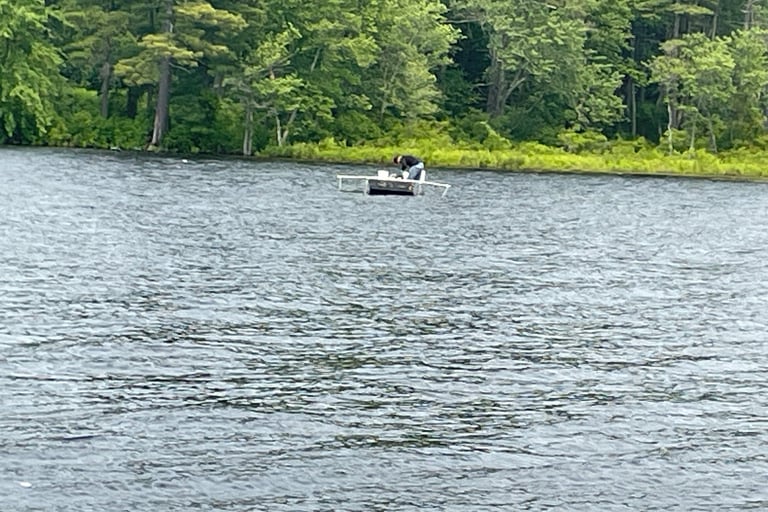

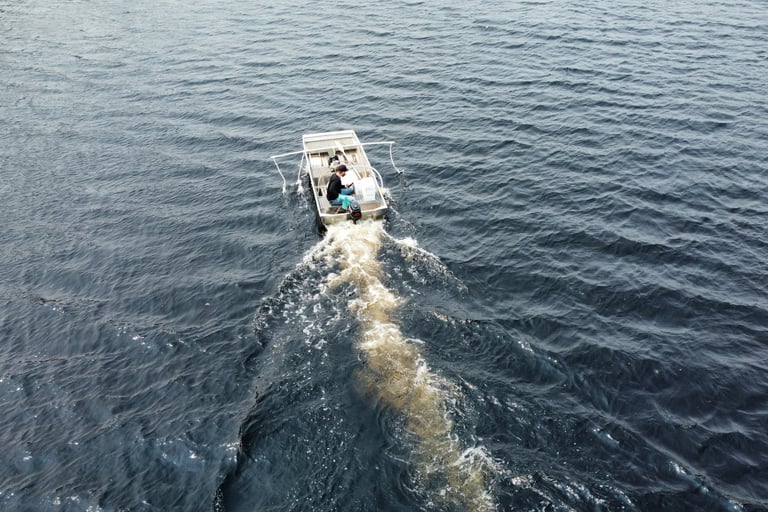


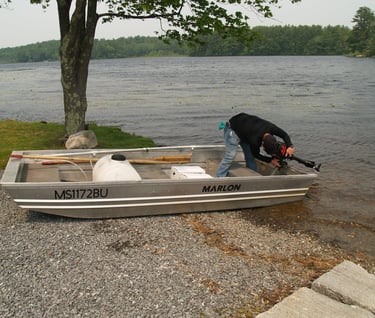
The good news: there does not appear to be a problem with Eurasian Milfoil in Peters Pond, an invasive weed that can severely impact lakes. The bad news: a recent (2022) evaluation of the pond by a wetlands scientist has identified another invasive specifies in the lake, commonly known as "curly-leaf pondweed" (Potamogeton crispus). It appears this species - which was not present in a previous survey conducted in 2003, likely originated in the westerly community beach/boat launch, and has spread throughout a significant portion of the pond. This aquatic plant joins a large populations of native weeds, the most prevalent of which are waterlilies, bladderwort, and coontail.
Not that weeds are all bad. These "macrophytes" provide food to water fowl and habitat to fish. And these aquatic plants may actually keep algae in check, as they can "outcompete" algae in uptaking available nutrients, most specifically phosphorus. But it is clear that there are just too many weeds in the lake, and that this excessive growth is not only limiting recreational uses of the pond, but is also interfering with oxygen transfer and other lake functions, which could harm fish and other aquatic populations.
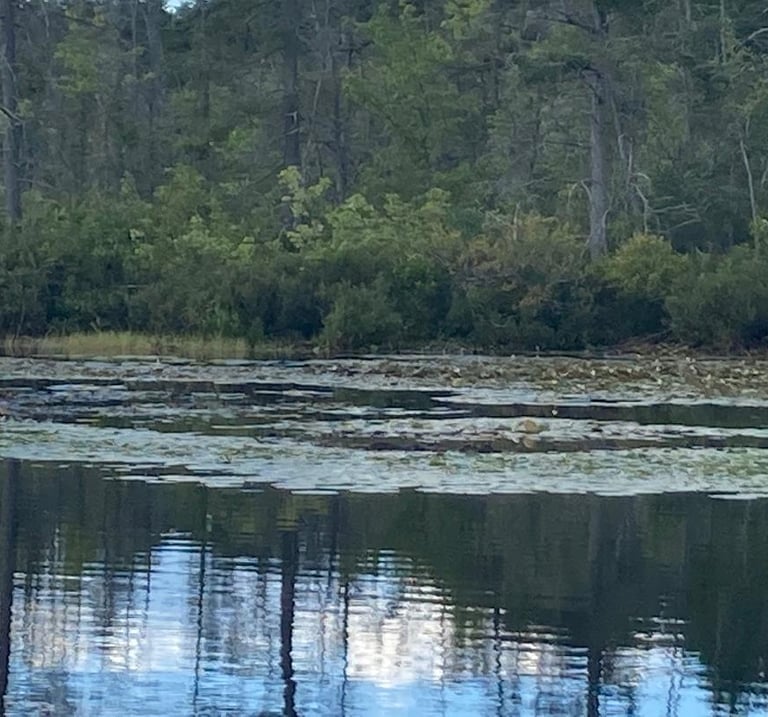


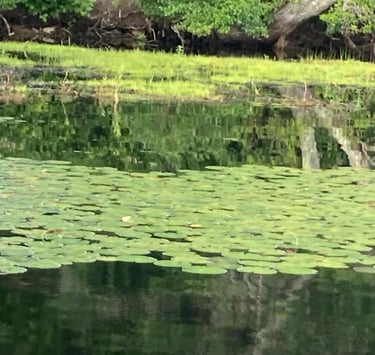

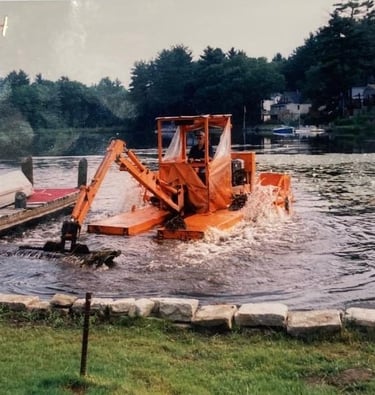
Weeds have been an issue in the pond since at least the 1950s, but are now arguably worst than ever.
In 2004, PPGA retained the firm Aquatic Control Technology Inc. (ACT) to undertake a weed mitigation program involving a "hydro-rake" to remove plants (by the roots) in selected areas. This apparatus (see photo on right) was essentially a backhoe on a float with side paddle wheels (see photo to the right). In addition to remediating the community beach areas, 20 homeowners paid for their own work on their shore line.
In 2022, PPGA retained the firm Water and Wetlands LLC to evaluate the current state of weed growth in the pond and recommend options to control or mitigate problem areas. This will first require obtaining a permit from the Dracut Conservation Commission.
Studies of the lake and weed issues were conducted in 1979, by the Massachusetts Division of Water Pollution Control, in 2003, by Aquatic Control Technology Inc. (ACT), a firm retained by PPGA, and in 2022, by Water and Wetlands LLC, a firm retained by PPGA. Click on the buttons below to download the PDF reports.
LAKES/WEED STUDIES
NOTICE OF INTENT - 2023
PPGA has filed a Notice of Intent with the Dracut Conservation Commission to undertake a weed management program in Peters Pond. A public hearing will be held on this proposal on Wednesday February 1, 2023 at 7 PM in the Dracut Town Hall Board of Selectmen Chambers. Click on the link below to view the Notice of Intent.
ORDER OF CONDITIONS - 2023
On 2/1/23, the Dracut Conservation Commission issued an Order of Conditions to PPGA to implement its proposed weed management program in Peters Pond.
Click below to view the Order of Conditions
WEED SPECIES
A wide assortment of native aquatic plants ("macrophytes") have been documented in the pond, including:
Emergent plants - these plants live on or near the banks of the pond, and an have deep and dense roots; examples include burred (Sparganium) and pickerelweed (Pontedaria sp).
Floating plants - these plants may have roots attached to the pond bottom or can be free-floating in the water; examples include white waterlillies (Nymphaea odorata), a dominant species in Peters Pond.
Submerged plants - these are rooted to the bottom of the pond and grow entirely under the water surface; examples include bladderwort (Utricularia sp) and coontail (Ceratophyllum demersum)
A good illustration is provided below (New Hampshire DES)
There are also a number of "floating islands", typcially in areas of dense waterlillies, where the root mat is extensive.
There are good guides in this regard available from the Massaschusetts Department of Conservation and Recreation (https://www.mass.gov/doc/dcr-guide-to-aquatic-plants-in-massachusetts/download) and New Hampshire Department of Environmental Services (https://www.des.nh.gov/sites/g/files/ehbemt341/files/documents/2020-01/r-wd-5-30.pdf)
That being said, we must be vigilant in stopping the introduction of invasive weeds into the pond - most importantly by making sure boats launched into the pond do not contain any weeds or debris from other ponds or lakes.

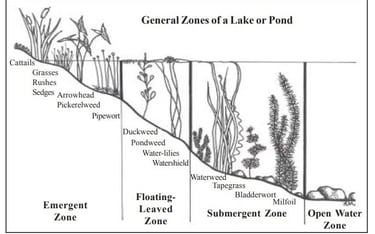
WEED MAPS
At present, we have three maps that show weed growth at Peters Pond. The first map is from 1979, and was published by the Massachusetts Division of Water Pollution Control. The second map was developed by the private firm Aquatic Control Technology Inc. in 2003, under contract to PPGA. The third and most recent map was developed in 2022 by Waters and Wetland LLC.




1979 Weed Map
2003 Weed Map
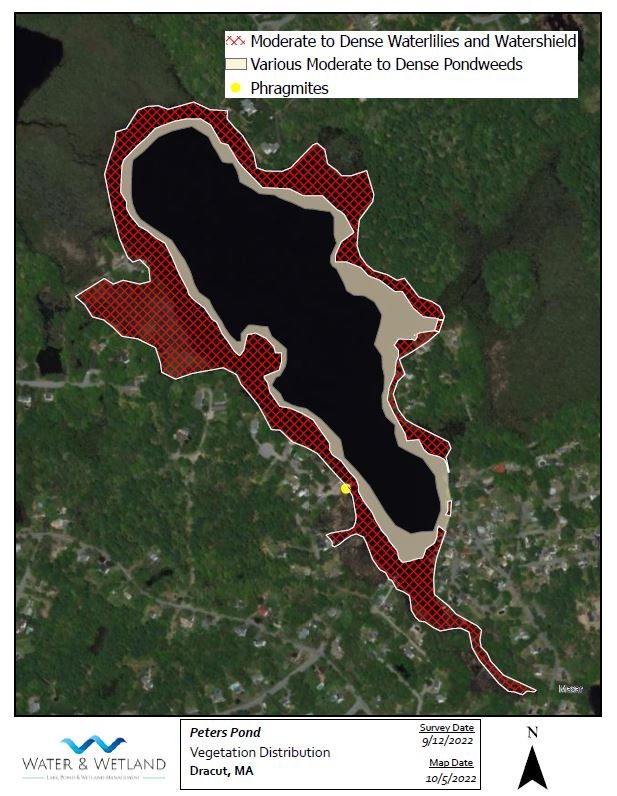

2022 Weed Map